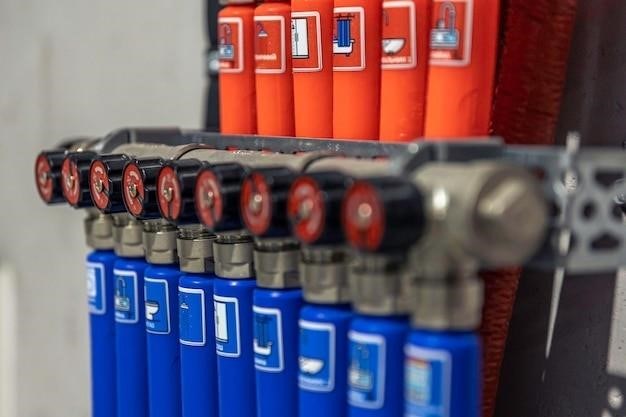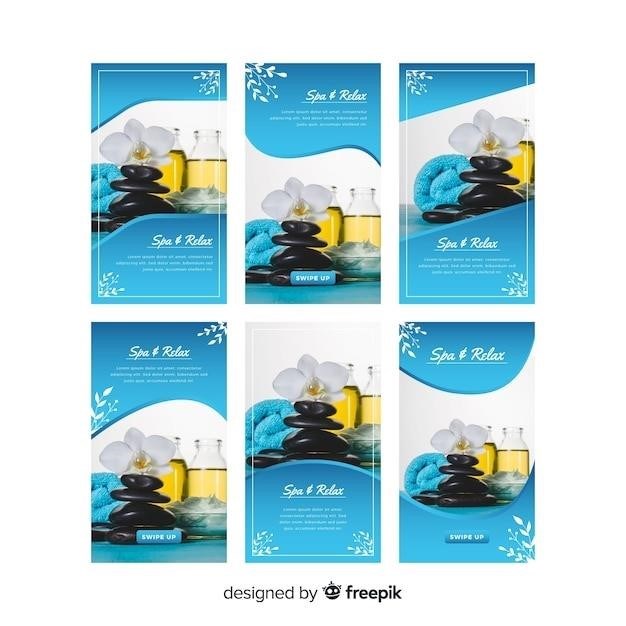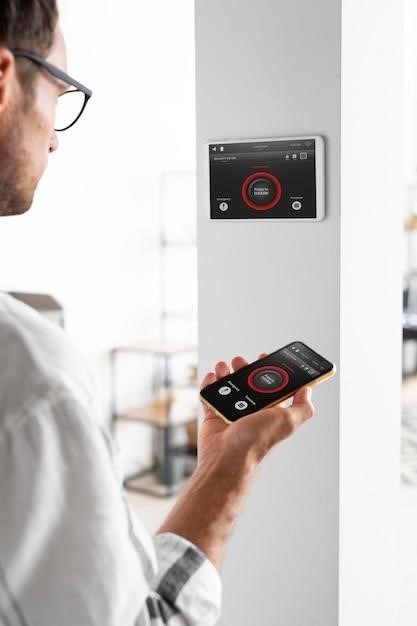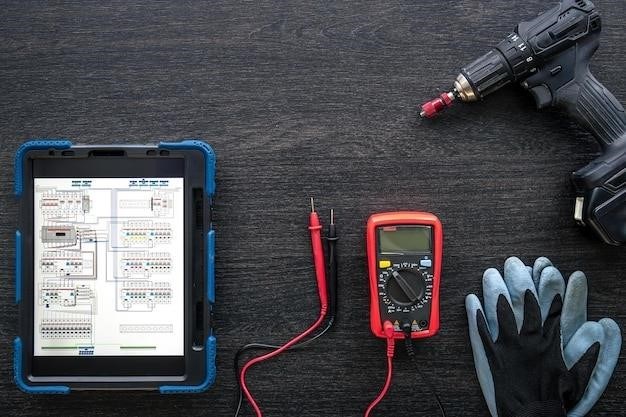V6 manual cars combine powerful engines with precise control, offering a thrilling driving experience. They balance performance and efficiency, appealing to enthusiasts seeking both speed and engagement.

What is a V6 Engine?
A V6 engine is a six-cylinder internal combustion engine with cylinders arranged in a V configuration. It offers a balance of power, smoothness, and efficiency, making it popular in various vehicles. Known for its refined operation and sufficient horsepower, the V6 engine is often paired with manual transmissions in performance-oriented cars. Its compact design allows for better weight distribution, enhancing handling and driving dynamics. The V6’s versatility suits both everyday driving and high-performance applications, making it a preferred choice for enthusiasts seeking a blend of power and control. This configuration is widely used in models like the Honda Accord V6 and Acura TL SH-AWD, showcasing its adaptability and reliability.
Benefits of Manual Transmission
Manual transmissions offer drivers greater control and engagement, allowing precise gear shifts for optimal performance. They typically provide better fuel efficiency compared to automatics, especially in city driving. Lower maintenance costs and longer durability are additional advantages, as manual transmissions have fewer complex components. Enthusiasts appreciate the direct connection to the vehicle, enhancing the driving experience. In V6 manual cars, this combination delivers a perfect balance of power and handling, making it a favorite among those who value both performance and cost-effectiveness. The stick shift also serves as a deterrent to theft, as not everyone knows how to drive a manual. Overall, manual transmissions remain a popular choice for driving purists seeking a more immersive experience behind the wheel.

Popular V6 Manual Cars
V6 manual cars are sought after for their blend of power and driver engagement. Models like the 2025 Jeep Wrangler, Honda Accord V6, and Acura TL SH-AWD stand out.
2025 Jeep Wrangler
The 2025 Jeep Wrangler remains a top choice for enthusiasts, offering a robust V6 engine paired with a precise 6-speed manual transmission. Its off-road prowess is unmatched, combining durability and control. The Wrangler’s overall score of 8.1/10 highlights its reliability and performance. With a focus on versatility, it seamlessly transitions from rugged trails to urban environments. The manual transmission enhances the driving experience, providing a direct connection to the vehicle. Whether conquering challenging terrains or cruising on highways, the Wrangler delivers a blend of power and precision, making it a favorite among both adventurers and driving purists. Its enduring popularity underscores its reputation as a reliable and exhilarating choice.
Honda Accord V6 6-Speed Manual
The Honda Accord V6 6-Speed Manual stands out as a refined yet exhilarating option, combining a powerful V6 engine with a smooth, precise manual transmission. Known for its reliability and performance, this configuration offers a perfect balance between power and fuel efficiency. The 6-speed manual transmission provides a engaging driving experience, with crisp shifts and responsive acceleration. Enthusiasts praise its refined handling and quiet cabin, making it ideal for both daily commuting and spirited drives. With its reputation for durability and Honda’s legendary engineering, the Accord V6 6-Speed Manual remains a sought-after choice for those who value both performance and practicality. Its versatility and timeless design ensure it appeals to a wide range of drivers.
Acura TL SH-AWD 6-Speed Manual
The Acura TL SH-AWD 6-Speed Manual is a standout in the luxury sedan segment, offering a blend of performance and sophistication. Equipped with a powerful V6 engine and a precise 6-speed manual transmission, it delivers smooth power delivery and responsive acceleration. The SH-AWD system enhances traction and handling, making it a capable performer on various road conditions. Inside, the TL features a luxurious cabin with premium materials and advanced technology. Enthusiasts appreciate the manual transmission’s tactile feel and the engine’s robust power output of 305 horsepower. This combination of performance, luxury, and all-weather capability makes the Acura TL SH-AWD 6-Speed Manual a desirable choice for drivers seeking both excitement and refinement. Its balance of sportiness and elegance sets it apart in its class.
BMW M2, M3, M4
The BMW M2, M3, and M4 are high-performance vehicles that exemplify precision engineering and exhilarating driving experiences. These cars are powered by a potent inline-6 engine, delivering exceptional power and responsiveness. The manual transmission option in these models is a favorite among driving enthusiasts, offering a tactile connection to the road. With the M2 producing 405 horsepower, the M3 and M4 delivering up to 473 horsepower, and the Competition models reaching 503 horsepower, these cars are built for speed and agility. Their rear-wheel-drive layout, combined with BMW’s renowned handling, makes them a joy to drive on both twisty roads and the track. The manual gearbox enhances the visceral experience, making these BMWs a testament to the thrill of driving.
Cadillac CT4-V Blackwing
The Cadillac CT4-V Blackwing is a high-performance sedan that combines luxury with exhilarating driving dynamics. It features a powerful twin-turbo 3.6L V6 engine, producing 472 horsepower and 445 lb-ft of torque. The CT4-V Blackwing offers a 6-speed manual transmission, catering to driving purists who value precision and control. Its rear-wheel-drive layout and adaptive suspension ensure sharp handling and stability, making it a standout on both the road and the track. The manual gearbox provides a tactile driving experience, with a satisfying clutch feel and crisp shifts. Priced starting around $63,000, the CT4-V Blackwing is a compelling choice for enthusiasts seeking a blend of power, refinement, and driver engagement. Its exclusivity and performance make it a desirable option in the V6 manual car segment.
Nissan 400Z
The Nissan 400Z is a thrilling revival of the classic Z-car lineage, offering a powerful V6 engine paired with a manual transmission. Its 3.0L twin-turbo V6 delivers 400 horsepower and 350 lb-ft of torque, ensuring dynamic acceleration and responsive performance. The 6-speed manual gearbox enhances driver engagement, with rev-matching technology for smoother downshifts. Designed to blend nostalgia with modernity, the 400Z features a sleek, retro-inspired exterior and a tech-laden interior. Rear-wheel drive and a near-perfect weight distribution make it a joy to handle on twisty roads. Priced competitively, the 400Z appeals to enthusiasts seeking a balance of power, style, and driving involvement. It stands as a testament to Nissan’s commitment to delivering exhilarating manual driving experiences in the age of automation.
Porsche 718 and 911
The Porsche 718 and 911 are iconic sports cars that offer exceptional performance with V6 engines and manual transmissions. The 718 Cayman and Boxster feature a 3.0L naturally aspirated flat-six, but certain trims offer a V6 option, delivering smooth power and precise handling. The 911, a legendary rear-engine sports car, also provides V6 variants in select models, combining heritage with modern efficiency. Both models are celebrated for their responsive manual gearboxes, which enhance driver engagement and control. With their balanced chassis and refined power delivery, these Porsches cater to enthusiasts who value both performance and the joy of driving. Their timeless design and engineering excellence make them standout choices for V6 manual car enthusiasts.
Toyota Supra
The Toyota Supra is a legendary sports car that has regained its place in the automotive world with its modern iteration. While the latest Supra features a 3.0L inline-6 engine, certain trims and generations have offered V6 powerplants, blending performance with refinement. The manual transmission option enhances the driving experience, providing precise control and engagement. Known for its agile handling and responsive acceleration, the Supra delivers a thrilling ride. Its sleek design, inspired by its heritage, combines aerodynamics with elegance. With a starting price around $43,000 for new models, the Supra offers a balance of performance and affordability. It remains a favorite among enthusiasts, embodying the spirit of a driver-focused sports car.

Performance and Handling
V6 manual cars deliver exceptional acceleration and precise control, offering a thrilling driving experience with responsive steering and balanced handling, maximizing both power and agility.
Acceleration and Power Delivery
V6 manual cars combine a powerful engine with precise gear control, delivering smooth and responsive acceleration. The V6 engine provides ample torque across the RPM range, ensuring quick off-the-line performance and effortless overtaking. Manual transmissions allow drivers to optimize power delivery by selecting the right gear for the situation, enhancing both speed and efficiency. The direct connection between the engine and wheels enables instant throttle response, making driving feel more engaging and dynamic. Whether cruising on the highway or accelerating through winding roads, V6 manual cars excel at balancing power and refinement, offering a thrilling yet controlled driving experience. This synergy of engine and transmission makes them a favorite among enthusiasts seeking both performance and driver involvement.
Comparison with Automatic Transmissions
V6 manual cars offer a distinctly different driving experience compared to their automatic counterparts. Manual transmissions provide greater driver engagement, with precise control over gear shifts, which can enhance acceleration and responsiveness in performance driving. Automatic transmissions, while offering convenience and ease of use, may lack the direct connection and control that manuals provide. Fuel efficiency can vary between the two, with manuals often excelling in city driving and automatics optimizing highway performance. Additionally, manual transmissions are generally more cost-effective in terms of purchase price and maintenance. However, modern automatics, especially those with advanced features like torque converters and adaptive shift logic, are closing the gap in both performance and efficiency. Ultimately, the choice depends on whether one prioritizes the immersive driving experience of a manual or the convenience of an automatic.
Driving Dynamics and Control
V6 manual cars deliver exceptional driving dynamics, offering a blend of power and precision. The manual transmission allows drivers to fully engage with the vehicle, providing tactile feedback through the clutch and gearshift. This connection enhances control, particularly during spirited driving or navigating tight corners. The V6 engine’s smooth power delivery complements the manual gearbox, enabling seamless acceleration and responsive throttle inputs. Weight distribution plays a key role, with many V6 manual cars featuring rear-wheel-drive layouts that improve handling and balance. Additionally, precise steering and suspension tuning further elevate the driving experience, making these cars both exhilarating and manageable on the road. This combination of engine performance and chassis refinement creates a driving experience that is both rewarding and enjoyable.

Cost Considerations
Cost considerations for V6 manual cars vary by model, brand, and location. Purchase prices range from affordable to premium, depending on features and performance. Insurance, fuel efficiency, and maintenance costs also play a role in overall ownership expense.
Price Range of New V6 Manual Cars

The price range of new V6 manual cars varies significantly based on the brand, model, and features. Entry-level V6 manual cars, such as the Honda Accord or Jeep Wrangler, start around $30,000 to $40,000. Mid-range options like the Acura TL or Nissan 400Z typically fall between $40,000 and $60,000. High-performance models, such as the BMW M2 or Porsche 911, can range from $60,000 to over $100,000, depending on trims and configurations. Luxury V6 manual cars, like the Cadillac CT4-V Blackwing, often exceed $50,000 and go up to $70,000 or more. These prices reflect the balance of power, performance, and brand prestige, catering to both enthusiasts and everyday drivers seeking a blend of efficiency and excitement.
Used V6 Manual Cars for Sale
Used V6 manual cars offer a cost-effective way to own a powerful and engaging vehicle. Prices vary widely depending on the model year, mileage, and condition. Older models, such as the Honda Accord or Toyota Camry with V6 engines, can be found for $10,000 to $20,000. Sportier options like the BMW 3 Series or Nissan 370Z may range from $15,000 to $30,000. Luxury models, such as older Acura or Infiniti cars, often fall between $20,000 and $40,000. Certified pre-owned vehicles may cost slightly more but come with warranties. Online marketplaces and dealerships are great places to find these cars, offering a mix of affordability and performance for enthusiasts or practical drivers seeking a reliable ride.
Cost of Ownership and Maintenance

The cost of owning a V6 manual car involves several factors, including fuel efficiency, maintenance, and insurance. V6 engines generally offer decent fuel economy, especially in sedans, but may consume more fuel in heavier vehicles or sporty models. Maintenance costs are moderate, with routine services like oil changes and tire rotations being essential. Parts for V6 engines are widely available, but larger engines may incur higher costs for components like spark plugs and belts. Insurance premiums can vary, often reflecting the car’s performance capabilities. Regular servicing is crucial to avoid costly repairs, such as replacing timing chains or engine mounts. Overall, while V6 manual cars are not the cheapest to maintain, proper care can ensure long-term reliability and performance.

Maintenance and Care
Regular maintenance is essential for V6 manual cars to ensure optimal performance and longevity. Routine oil changes, transmission fluid checks, and brake inspections are vital. Ensuring proper clutch and timing chain health prevents costly repairs. Regular tire rotations and alignment checks also maintain handling and fuel efficiency. Cleaning and inspecting air filters can improve engine performance. Addressing minor issues promptly prevents them from becoming major problems. Proper care extends the lifespan of both the engine and transmission, ensuring a smooth and responsive driving experience over time.
Tips for Maintaining a Manual Transmission
Proper maintenance of a manual transmission in V6 cars is crucial for longevity and performance. Regularly check and top up the transmission fluid to ensure smooth gear shifts. Replace the fluid every 30,000 to 60,000 miles, depending on the manufacturer’s recommendations. Avoid riding the clutch, as it can wear down the clutch and pressure plate. Shift gears smoothly to prevent stressing the transmission. Never rest your foot on the clutch pedal while driving. Inspect the clutch cable or hydraulic system for any signs of wear or leakage. Address unusual noises, such as grinding or whining, promptly to avoid costly repairs. Follow the manufacturer’s maintenance schedule for optimal performance and reliability.
Common Issues with V6 Engines
V6 engines, while powerful and smooth, can experience specific issues over time. One common problem is oil consumption, as some V6 engines tend to burn oil, especially as they age. Regular oil level checks and timely top-ups are essential. Another issue is intake manifold leaks, which can cause rough idling and reduced performance. Spark plug fouling is also prevalent, leading to misfires and decreased efficiency. Additionally, heat-related problems can arise, such as coolant leaks or faulty thermostats, which may cause overheating. In some cases, the PCV (Positive Crankcase Ventilation) system can fail, leading to excessive pressure buildup. Lastly, timing chain tensioner failures can occur, resulting in costly repairs if not addressed promptly. Proper diagnostics and timely repairs are crucial to maintaining the health of a V6 engine.
DIY Maintenance for V6 Manual Cars
Regular DIY maintenance is essential for keeping V6 manual cars in optimal condition. Start with oil changes every 5,000 to 7,500 miles, using synthetic oil for better performance. Inspect and replace the air filter every 15,000 miles to ensure proper airflow. Spark plugs should be checked and replaced at around 30,000 miles to prevent misfires. For manual transmissions, check the fluid level regularly and replace it every 30,000 to 60,000 miles. Brake pads and rotors should be inspected every 10,000 miles for wear. Additionally, monitor the cooling system, as V6 engines can be prone to overheating. Finally, inspect CV joints and driveshaft components periodically for signs of wear. These simple DIY tasks can save money and extend the lifespan of your V6 manual car.

Future of V6 Manual Cars

The future of V6 manual cars faces challenges with declining manual transmission sales and a shift toward electrification and smaller engines, yet enthusiast demand persists.
Decline of Manual Transmissions in New Cars
The decline of manual transmissions in new cars is evident, with automakers increasingly favoring automatics and CVTs for better fuel efficiency and smoother city driving. As technology advances, manual transmissions are seen as less practical for everyday use. Electric vehicles further reduce the need for manual options. In 2023, only about 18% of new cars sold in the U.S. offered a manual transmission, a significant drop from previous decades. This shift reflects consumer preferences for convenience and the growing popularity of SUVs and crossovers, where manuals are rarely offered. While enthusiasts still cherish manual V6 cars, their availability is becoming increasingly limited as automakers phase them out.
Modern Alternatives to V6 Engines
Modern alternatives to V6 engines include smaller, more efficient powertrains like turbocharged 4-cylinder engines, which often deliver comparable performance while improving fuel economy. Hybrid systems, such as those in Toyota and Honda models, combine gasoline engines with electric motors for enhanced efficiency. Additionally, electrification is reshaping the automotive landscape, with fully electric vehicles (EVs) offering instant torque and reduced maintenance. Turbocharged engines and hybrid setups are increasingly favored by automakers, as they meet stricter emissions standards and consumer demands for efficiency. Even in manual cars, these alternatives are gaining traction, providing a blend of performance and practicality that traditional V6 engines can no longer match in today’s market.
Collectibility and Enthusiast Interest
V6 manual cars are gaining traction among car enthusiasts and collectors due to their unique blend of performance and driving engagement. manual transmissions are often sought after for their tactile feel and connection to the vehicle, making them desirable for purists. certain models, like the Honda Accord V6 6-Speed and BMW M2/M3/M4, are becoming modern classics, with enthusiasts valuing their balance of power and precision. as automatics and EVs dominate the market, V6 manual cars stand out, appealing to those who cherish driving involvement. their exclusivity and heritage make them attractive for collectors, ensuring a loyal following and potential long-term appreciation in value.




































